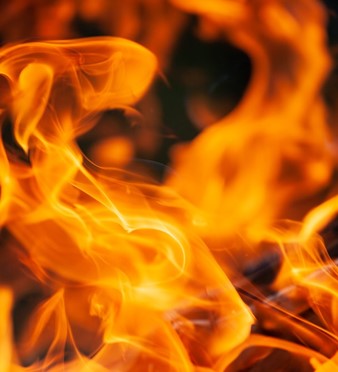All workplaces must take precautions regarding fire safety, but some industries are more prone to catastrophic fires than others. From manufacturing to freight to food, certain businesses carry an increased risk of devastating fire-caused impacts. Thus, Devin Doyle of Newport Beach explains that extra attention must be taken to assure complete safety.
NFPA data shows that 37,910 fires in manufacturing and industrial establishments took place from 2011 to 2015. This figure includes fires in defense, agriculture, mining, and utility environments. However, 65% of the most damaging disasters occurred in factories.
Such numbers emphasize the importance of fire safety in high-risk industries. Luckily, the right tools, training, and technology can improve outcomes and prevent flames in the first place.
Defining High-Risk Industries
In a fire safety context, “high-risk” doesn’t necessarily mean the most dangerous. Instead, it relates to the boosted likelihood of a catastrophic fire (i.e., increased chances of a fire occurring and being particularly damaging).
Some specifically high-risk industries and businesses in this context include:
- Manufacturing
- Oil and gas refineries
- Petrochemical facilities
- Oil storage terminals
- Offshore oil and gas exploration
- Nuclear power plants
- Renewable energy production
- Freight transportation
- Restaurants
Essentially, the more flammable material in an industry, the more at-risk it is.
Ways to Protect Against Disastrous Business Fires
With the high-risk industries in mind, company owners should attempt to follow the following four recommendations to protect their businesses from devastating consequences:
Implement and Maintain Fire Control/Suppression Systems
Fire protection, control, and suppression systems are establishments’ first lines of defense against the flames. Buildings should be fully equipped with the latest fire-related mod-cons to ensure safety.
Such systems involve:
- commercial fire sprinklers
- portable fire extinguishers
- fire alarms
- smoke detectors
Working with a qualified fire protection solutions provider is essential. These experts ensure the right equipment is installed in the right places for each business’s building.
Establish an Evacuation Plan
Fire evacuation plans must be comprehensive and detail exactly how employees should leave the building safely if a fire occurs.
Once created, management should clearly communicate the plan to all employees. Most facilities display evacuation maps on establishment walls to ensure everyone knows how to exit during a fire.
Special Hazard Systems for Heavy Machinery
What’s the top cause of manufacturing and industrial fires in the United States? Heavy machinery and large vehicles. But these devastating events can be prevented with a special hazard fire protection system.
The systems are designed to protect high-risk equipment like CNC machines, grinders, cutters, agricultural vehicles, and lathes, detecting and stopping machine fires in a matter of moments.
Not only do special hazard fire systems save money, but they also save irreplaceable lives.
Provide Adequate Fire Prevention and Response Training
Last but not least, all employees should receive sufficient fire prevention and response training. Since they’re working in a facility more prone to fire, they need to know how to work safely to prevent an accident and how to respond if a fire starts.
Moreover, all businesses should ensure a safe and efficient operation with professional fire safety solutions in place. In a high risk industry, the aforementioned safety tips can help prevent loss of inventory, and life, safeguarding a safe work environment.

